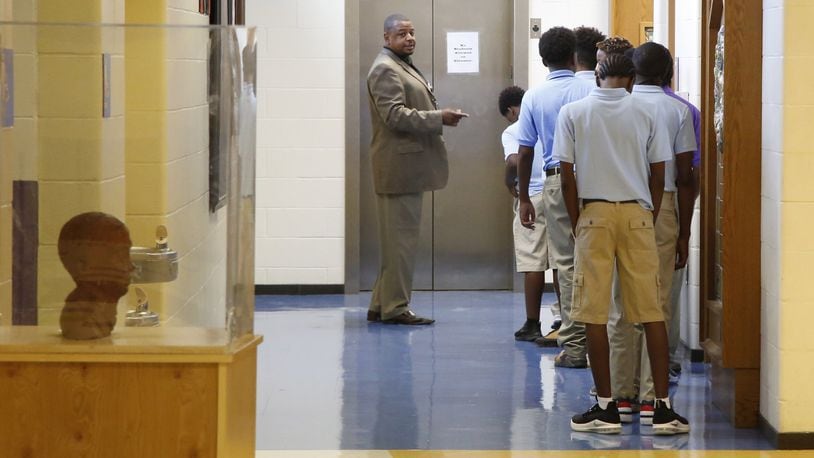The teaching field has too few black teachers, especially black male teachers, according to experts.
But, they emphasize, black students also need familiar touchstones — and role models — in course materials and textbooks.
“It’s incredibly important for the books in the school to have characters that look like them (minority students). It’s also important for the curriculum to be reflective of some of the experiences that they’ve had,” said Tom Lasley of Learn to Earn.
THE PATH FORWARD: Urgent turnaround needed as state takeover looms
“I’ve talked to a number of teachers who say they’re amazed when African-American boys, when they find books that have a lot of characters that look like them, how much more engaged they seem to be.”
DPS Superintendent Elizabeth Lolli said the district is conscious when choosing textbooks to ensure there is diversity in both pictures and text. She said all the elementary schools now have multicultural libraries, and every month two books are chosen and read at each grade level that are multicultural.
Providing diversity in the teaching ranks has been a struggle in urban districts throughout Ohio. At DPS, just three of 27 buildings last year — Westwood Elementary, Dunbar Early College High School and Dayton Boys Preparatory Academy — had a teaching staff more than 50 percent black, according to state data.
THE PATH FORWARD: The region must rally to fix the Dayton Public Schools
“For a long time we have looked at teacher quality independently of racial demographics, but there is some new evidence that makes us re-evaluate that old perspective and increasingly we see strong evidence that students who are taught by teachers of their own race have a litany of associated positive student outcomes,” Brookings researcher Michael Hansen said.
Lasley said programs like the University of Dayton’s Urban Teaching Academy have shown success at getting qualified teachers into areas where they’re needed, but the demand is still great.
“Doing this well is so hard, because we need lots of teachers,” he said.
PODCAST: Listen to the Path Forward: Dayton Schools podcast
A school district spokesman said the district is focused on hiring qualified teachers from accredited universities who can work in an urban environment. But Lolli and several black male teachers interviewed said there is one big obstacle: pay. Until recently, step increases for teachers in Dayton were frozen, contributing to lower teacher pay than in many neighboring districts.
The median pay for Dayton teachers in 2017 was $50,238, compared to a statewide median of $57,907, according to a payroll database assembled by the Dayton Daily News.
The school board in May voted to unfreeze step increases, resulting in a pay increase of 2.5 to 5.5 percent for many teachers.
JOIN THE CONVERSATION: The Path Forward: Dayton Schools Facebook group
About the Author
